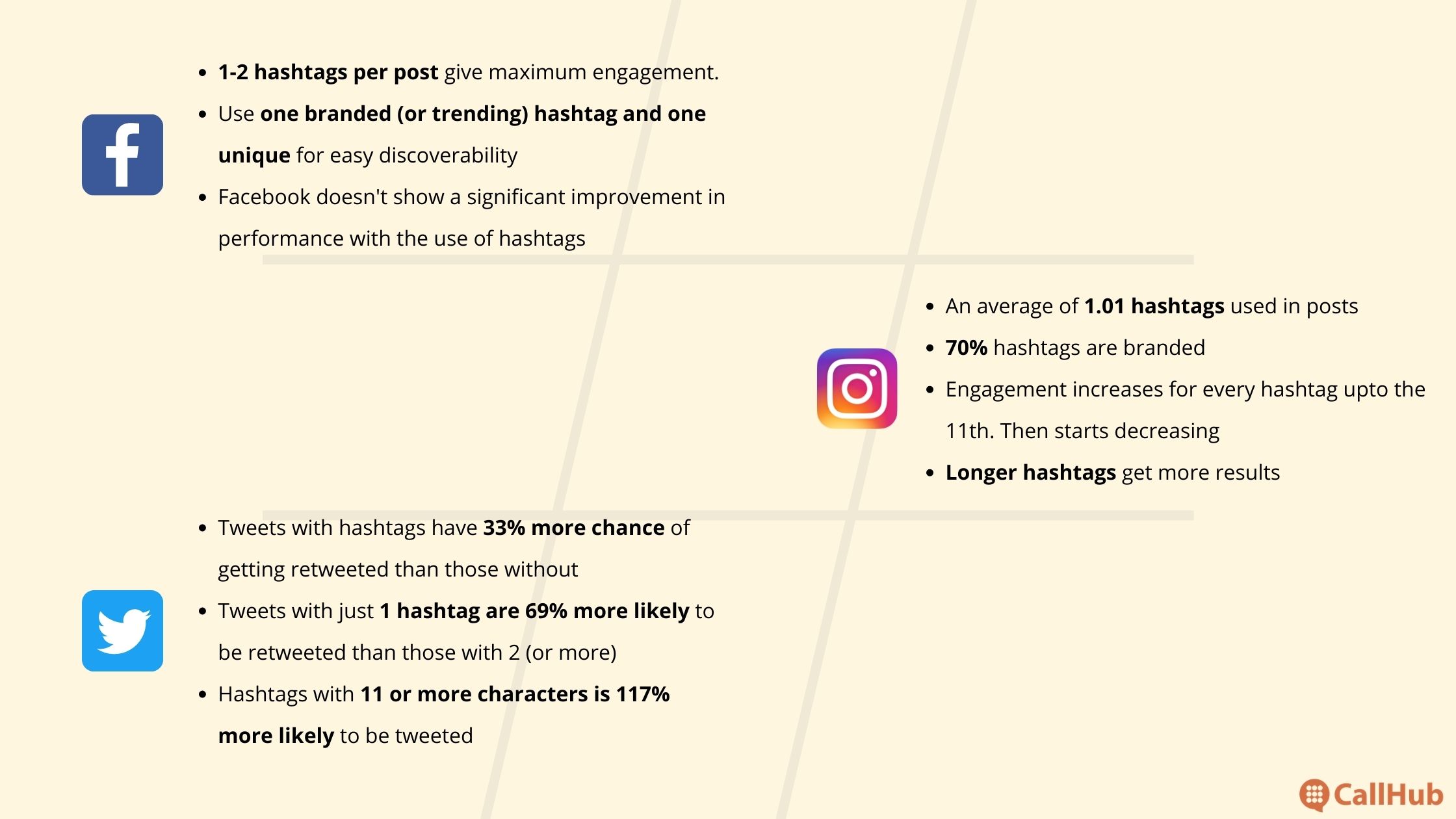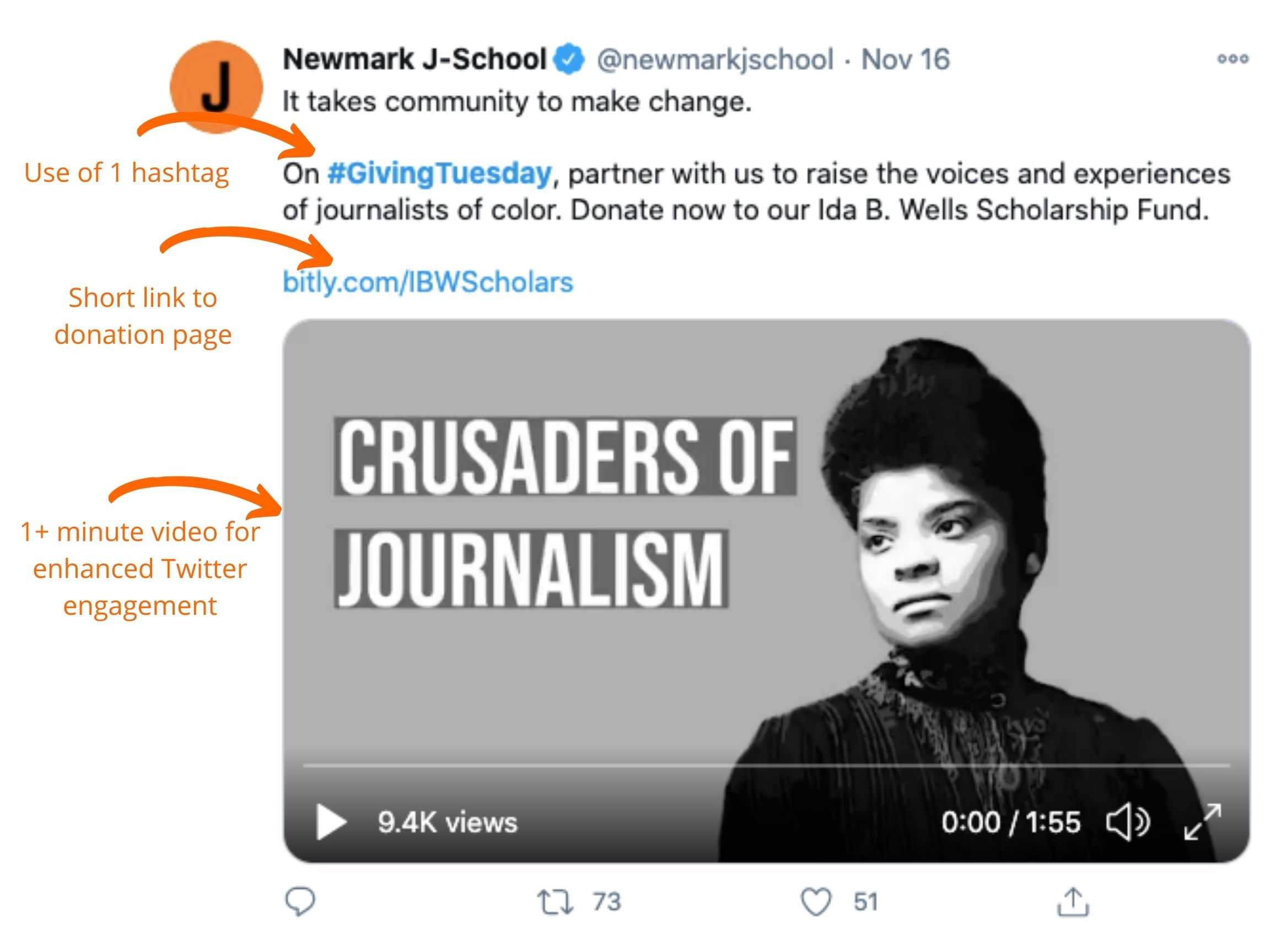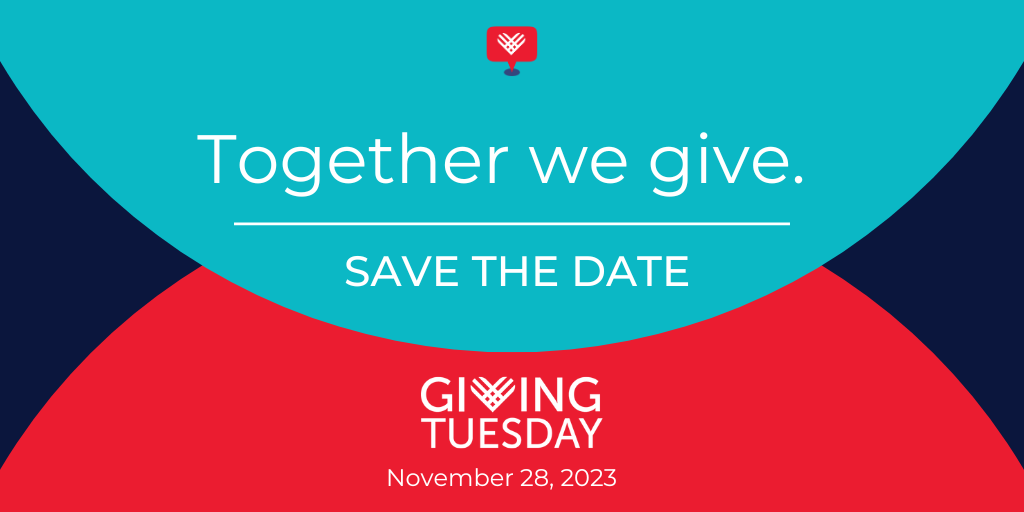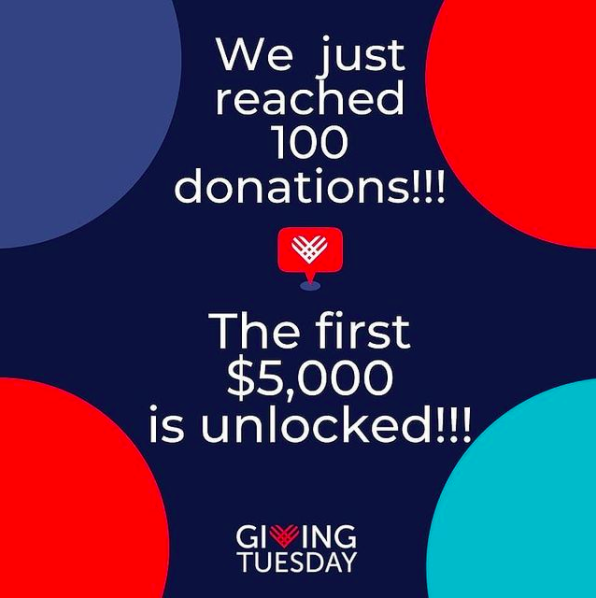Table of Contents
Planning to craft and share your Giving Tuesday social media posts? Worried about getting lost among the myriad of posts?
Don’t fret – making your Giving Tuesday social media posts stand out is entirely feasible.
Take a look at this Facebook post by Skydog Sanctuary about Giving Tuesday. It immediately caught my attention because I understand the impact a well-crafted post can have.

The post included:
- A relevant photo that immediately captures attention.
- A short but compelling appeal for donations as the caption.
It was published around a month before Giving Tuesday 2023 and, within a short time, earned 6.2K+ reactions, 234 comments, and 320 shares.
The Facebook page’s engagement levels spiked—one crucial success metric for Giving Tuesday social media posts.
An intelligent social media campaign can be the megaphone for your #GivingTuesday campaign and give you the followers or supporters you need, even in its final phase.
However, success involves following a step-by-step path to reach the goal. Here, we discuss an ideal timeline, best practices, and examples of engaging Giving Tuesday social media posts.
How to optimize your Giving Tuesday campaign:
1. The content of your posts
Any post on social media channels like Facebook and Twitter has three primary goals. I’ve realized these goals through years of trial and error in crafting social media content:
- To reach as many people as possible.
- To compel these viewers to read the post.
- To ensure readers engage (like, comment, share, click) with the post.
Recent studies show that visuals—images and videos—are more successful in reaching these targets than status or link posts.

Study the engagement trends of popular social media platforms before finalizing the Giving Tuesday posts on each. The above statistics show how images, videos, live videos, and other posts can affect Facebook, Twitter, and Instagram engagement.
Types of visual content that works for a Giving Tuesday social media campaign:
- Infographics with compelling stats
- Quotes and photos of beneficiaries
- Quotes and videos/photos of volunteers
- Impact videos
- Live videos by staffers or influencers/celebrities
2. Posts with influencer partnerships

Influencer partnerships have become a key strategy in my social media playbook. Influencers and celebrities have broad social media reach, and partnering with them for Giving Tuesday can advertise your campaign to potential new supporters and donors.
While your primary goal is still fundraising, influencer posts on your behalf can also target the goal of increased online engagement and donor outreach.
How to approach an influencer or celebrity for your campaign:
- Identify your donor universe and the celebrities or influencers that resonate with their views (advocating for the environment, LGBTQI+ rights, animal rights, etc.)
- Shortlist candidates by researching the frequency of posts and paid posts, follower count, social biography, connections, and social mentions.
- Establish contact with these potential ambassadors. Emails, Twitter mentions, Instagram messages, or calling agents are common ways of contacting a celeb.
- Write a contract listing, including the number and nature of posts to publish, the caption and hashtag to use, and the CTA.
- When the influencer(s) are onboard, draw up a timeline for the posts and assign a staffer to monitor them and help the celebrity team.
You May Also Like Website Prep Tips for Giving Tuesday Campaigns
3. The messaging of your post
Charity: Water has helped over 11 million people access clean water. The number is impressive, but their social media posts rarely portray that. Instead, they go on a micro level and share personal stories and ground-level impact.
That’s because real-life stories make your cause human.
During my time in the nonprofit world, I’ve learned that real-life stories make your cause human.
Best practices for sharing real stories:
- Include a photo of the volunteer, beneficiary, or staffer. Use these images as the thumbnails for a video.
- Let the person in focus look into the camera and use semantics to emphasize your messaging (e.g., the person working in a field if you are raising funds for farming)
- Use scripts only as a general guideline for videos. Let the protagonist share their story in their own words, making the posts more authentic.
- Encourage peer-to-peer fundraising in the caption—to nudge people to share your post and increase engagement. Like this post by the Paul Walker Foundation:

4. The objective of your posts
Giving Tuesday social media posts don’t just have the singular objective of raising funds. They also aim to:
- Expand your donor base- Recent trends in online giving have shown a surge in digital donations. Explain how your campaign aligns with this trend and how you plan to expand your donor base on Giving Tuesday.
- Spread the word about your campaign- With the rise of short video platforms like TikTok and Triller, consider how your campaign can utilize these platforms to spread awareness. These platforms have gained immense popularity, and creating short, creative content can help you reach a broader, younger audience.
- Increase engagement levels on your social handles- Integrating chatbots and AI-powered tools can boost engagement on your social media pages. These tools can provide quick responses and guide users to donation pages, creating a seamless experience for your audience.
- Build Lists (for phone or text contact lists)- In a world where 61% of marketers emphasize lead quality as their paramount challenge, your focus should be cultivating lists that capture genuinely interested and high-quality leads. I can vouch for this as someone who understands the importance of lead quality.
- Collect micro-donations– Micro-donations and peer-to-peer fundraising have become increasingly popular. Share how your campaign will accommodate these trends and encourage supporters to make small, meaningful contributions.
If collecting donations brings you closer to success for the current Giving Tuesday campaign, the others also solidify support for future fundraisers.
Best practices to follow:
- For text-to-donate, display the keyword and shortcode prominently in your posts (make image posts with the keyword and shortcode, and add them to your profile picture, cover photo, or captions). A texting tool like CallHub allows you to set auto-responders for when a person opts in. You can start collecting their name, email IDs, and other information via text and pave the way for future contact.
- For platforms with a word limit (e.g., Twitter), briefly explain the cause and impact you hope to create—rather than your organization.
- Provide a direct link to your donation page in the caption. Make it short and customized. This will keep the copy looking clean and can increase the click-through rate by up to 39%.
- Encourage people to share your posts even if they aren’t ready to donate.
Related Reading: Giving Tuesday Toolkit – Plan a Successful Fundraising Campaign
Tips for an effective Giving Tuesday social media campaign:
Research and plan your content
My experiences have underscored the importance of well-researched content for a successful Giving Tuesday social media campaign. You must start research long before your first #GivingTuesday post rolls out.
Track your social media posts—which get higher engagement rates and the desired results. Remember, sometimes unconventional posts or channels may yield better outcomes, and you should leverage them for a high-risk event like Giving Tuesday.
For instance, if your followers have previously engaged with long text posts rather than images on Facebook, including long captions or status posts would be fitting—even if generic studies recommend otherwise.
How to do that:
- Research before the current Giving Tuesday campaign begins (before the first post is designed).
- Look for high open, engagement, and conversion rates on your posts via analytics on every platform.
- What kind of posts have worked for you previously? Replicating the model, but not the same posts would be a good practice.
- Leave room for trends that have come about in the current year and posts that work for other organizations.
Keep content ready ahead of time so your posts are always timely.
Use trending, relevant hashtags—in limited quantities
Over the years, I’ve seen that hashtags make your post relevant to a cause, easy to discover, and consistent (all your #GivingTuesday posts can be grouped by using a unique hashtag).
However, overusing hashtags will undo your work. I’ve also learned that too many hashtags in one post make it look like spam and, more importantly, decrease engagement. Here’s how posts with hashtags perform across various social media platforms:

Use one or two hashtags for each of your Giving Tuesday social media posts, and keep them consistent throughout the campaign.

Hashtags trending for Giving Tuesday:
| #givingtuesday – 56% #nonprofit – 7% #donate – 7% #givingtuesdaynow – 5% #giveback – 5% #charity – 4% #givingback – 4% #community – 4% #fundraising – 2% #giving – 2% |
Set the mood for Giving Tuesday on your profile
Branding your social media accounts with pictures, posts, or badges for Giving Tuesday shows followers that you are participating in the event. The right hashtags also increase visibility among non-followers.
Here are some simple things to do for branding social media accounts:
- Add the Giving Tuesday logo to your Instagram, Facebook, and Twitter accounts.
- Create a buzz by sharing tweets, posts, and images for Giving Tuesday ahead of the campaign.
- Add a #GivingTuesday frame or pin to your display pictures.
- Add stories on Instagram, tagging the relevant handles and adding hashtags.

Active engagement and direct contact for donors who interact with posts
I’ve discovered that regular monitoring of your posts and engaging with commenters and followers can lead to greater support. Thank them, answer their queries, encourage them to share your posts, and always maintain an active account throughout the campaign.
Supporters are more likely to give if they feel appreciated and special. Therefore, you must make an extra effort to engage with them and establish direct contact to introduce your campaign.
This can be quite difficult on social media if you have a large follower count. Segmenting the audience by engagement levels and targeting those with a stronger relationship with you can lessen the efforts and give better results.
- Identify major or repeat commentators (FB has a “Top Fan” badge, an excellent clue for your loyal followers).
- Send them a personal message introducing your Giving Tuesday campaign.
- If they respond, send them a donation link and mention how their contribution will have an impact.
- Request the phone numbers of donors and ask for their preferred communication channel for future contact (this is a fantastic opportunity for list building. Do not miss it).
- Add these numbers to your contact list. Invest in a text messaging and calling software like CallHub to send them a personal thank you message as soon as the donation is made.
Utilize interactive live streams
Live streaming has become a valuable tool in the digital age, and platforms like Facebook Live and Instagram Live offer unique opportunities for engagement. As I’ve experienced, hosting live streams can create a real-time connection with your supporters, allowing you to interact, answer questions, and share updates about your campaign.
One of the advantages of live streaming is the ability to infuse a sense of immediacy and authenticity into your campaign. You can take your audience behind the scenes, introduce your team, and even showcase the impact of previous donations, such as sharing stories of beneficiaries.
Here are some ways to effectively use live streaming:
- Launch events or challenges: Use live streams to kick off your Giving Tuesday campaign, set challenges for your supporters, or even announce matching donation opportunities.
- Q&A sessions: Engage with your audience by hosting live question-and-answer sessions where you can address inquiries about your organization’s work or the campaign.
- Updates and milestones: Throughout Giving Tuesday, share real-time updates on your fundraising progress, celebrate milestones, and express gratitude to your donors.
Highlight social impact metrics
Transparency and accountability are key factors that build trust with your supporters. Integrating social impact metrics into your campaign showcases your commitment to these principles.
Social impact metrics are measurable data that reflect the real-world outcomes of donor contributions. They provide a clear understanding of the impact supporters’ contributions can achieve. Sharing these metrics enables your donors to see the tangible results of their support.
Here’s how to effectively incorporate social impact metrics:
- Measurement and reporting: Explain how your organization consistently measures and reports the results of your programs. This can include metrics like the number of people helped, lives improved, or communities positively affected.
- Visual representations: Use visuals like infographics, charts, or graphics to make the metrics more accessible and understandable.
- Success stories: Share individual stories or case studies that illustrate how donations have made a difference in the lives of beneficiaries.
Once you have the resources ready, it’s time to draw a timeline and schedule posts for optimum results. Nonprofits and businesses start churning out the posts a month before Giving Tuesday. Here’s the general timeline you can follow:
Timeline for Giving Tuesday social media posts
30 – 15 days before Giving Tuesday
- Publish posts to inform people about the date of the event (Save The Date posts.)
- Start by creating a buzz but also keep the suspense high.
- As you near the 15-day timeline, elaborate more on the campaign and the impact you hope to make.
Ideas for #GivingTuesday posts: Infographics, beneficiary and volunteer stories, and list-building posts (asking people to subscribe to text and email campaigns).
15 – 7 days before D-day
- Ramp up the number of posts per day.
- Actively engage with your followers (by replying to comments, thanking them, and sending messages to top fans and active supporters).
- Ask volunteers and staffers to share the posts in their social circles.
- Remind followers that Giving Tuesday is just X days away.
Ideas for posts: SMS opt-in posts, influencer posts, beneficiary stories, and infographics.
7 – 2 days before D-day
- Soft ask for donations by sharing links.
- Begin the countdown (Giving Tuesday is seven days away! Donate now to get 2x matches for your gifts!)
- Activate direct outreach with your loyal followers and donors on social media. Contact existing donors and supporters by phone and text message.
- Send reminder texts to those who have confirmed interest in donating but haven’t contributed yet. A broadcast text messaging software like CallHub lets you do this by sending messages to hundreds of selected contacts within seconds.
Ideas for posts: Opt-ins, influencer posts, videos, reminder posts, and direct messages.
1 day before Giving Tuesday
- Publish videos or “go live” on Facebook and Instagram.
- Gather all hands on deck to share content and social media managers to engage with commenters and likers.
- Send thank-yous and donation appeals in direct messages to everyone engaged with your posts.
- Remind followers that Giving Tuesday is the following day.
- Send reminder texts, emails, and phone calls.
Ideas for #GivingTuesday posts: Influencer posts, reminder posts, direct messages, impact messages to inform how far the campaign has come, and Giving Tuesday thank you posts.

Day of launch
- Ramp up the number of posts. One post every two hours (or more!)
- The first post should announce that the campaign is now live/the last chance to donate.
- Follow-up posts can discuss the funds raised so far and how much more is needed ($15,000 was collected within 4 hours! Help us reach our target of $25,000!).
- Send last-minute reminder texts to those who haven’t donated yet (texts have a 98% open rate, so there’s a high chance they’ll read)
Ideas for #GivingTuesday posts: Reminder posts, celebratory posts, progress posts, and thank you notes.
Example of a Giving Tuesday social media posts calendar:

Social media is a great way to get the attention of a broad audience in a short time.
But because everyone is competing for this attention, social media is also not a great facilitator of major donations.
You need to make personal connections and have detailed conversations with supporters to earn their trust and, consequently, donations.
Social media may fall short here. However, once people respond to your opt-in posts, you can move the conversations to more personal channels like phone calls, text messages, or emails. This is how the process goes:
You post the keyword and shortcode on social media posts. People text the keyword to the number. You confirm their opt-in and ask for their preferred mode of communication (call/text). Note it and follow through for a personal, one-on-one conversation.
Invest in software that integrates with CRMs so all your new and old contacts are in one place. Try it here for free.
Last updated in November 2024.
Feature Image Source: Photo by GivingTuesday


